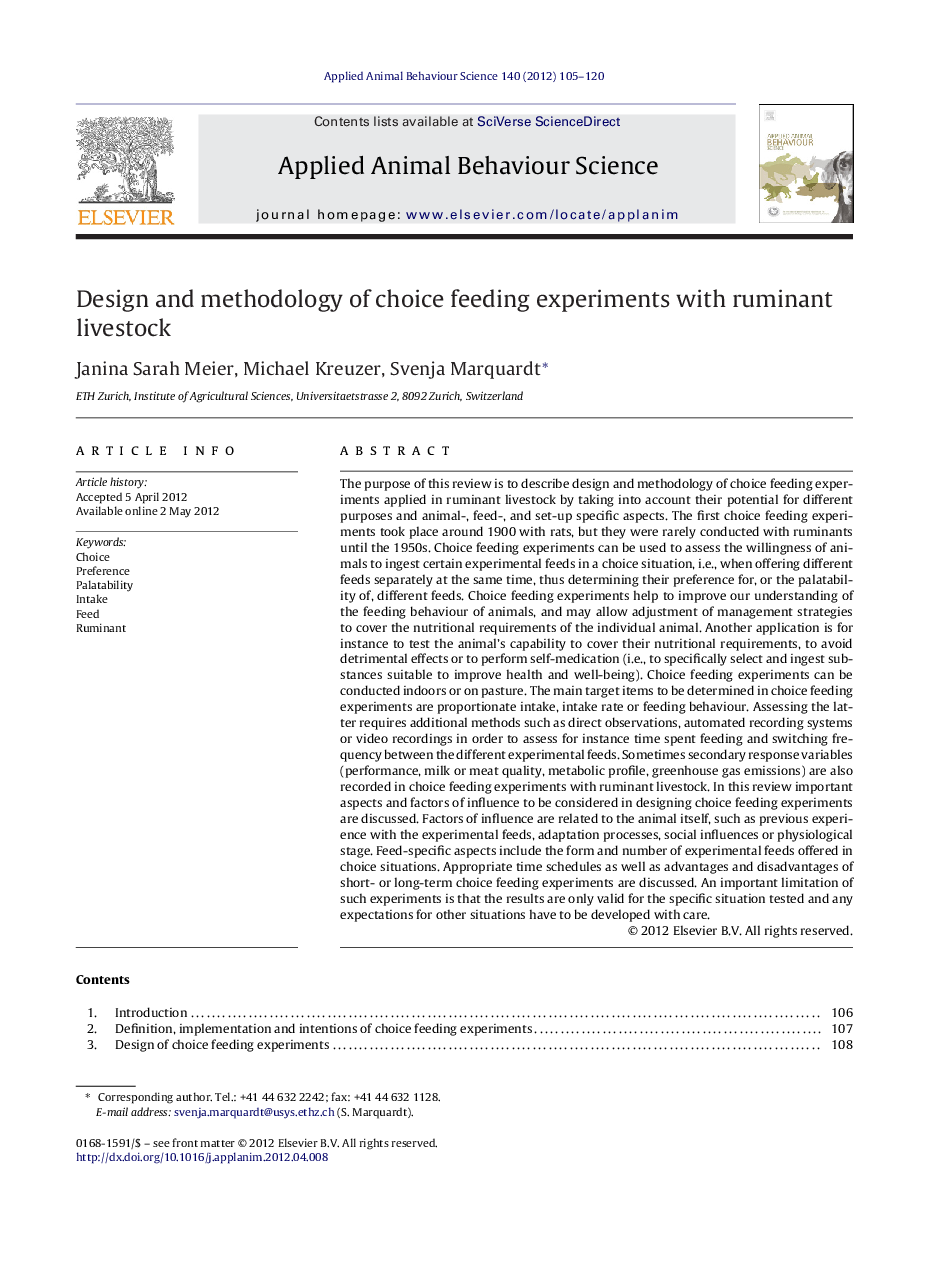| کد مقاله | کد نشریه | سال انتشار | مقاله انگلیسی | نسخه تمام متن |
|---|---|---|---|---|
| 4522894 | 1625372 | 2012 | 16 صفحه PDF | دانلود رایگان |

The purpose of this review is to describe design and methodology of choice feeding experiments applied in ruminant livestock by taking into account their potential for different purposes and animal-, feed-, and set-up specific aspects. The first choice feeding experiments took place around 1900 with rats, but they were rarely conducted with ruminants until the 1950s. Choice feeding experiments can be used to assess the willingness of animals to ingest certain experimental feeds in a choice situation, i.e., when offering different feeds separately at the same time, thus determining their preference for, or the palatability of, different feeds. Choice feeding experiments help to improve our understanding of the feeding behaviour of animals, and may allow adjustment of management strategies to cover the nutritional requirements of the individual animal. Another application is for instance to test the animal's capability to cover their nutritional requirements, to avoid detrimental effects or to perform self-medication (i.e., to specifically select and ingest substances suitable to improve health and well-being). Choice feeding experiments can be conducted indoors or on pasture. The main target items to be determined in choice feeding experiments are proportionate intake, intake rate or feeding behaviour. Assessing the latter requires additional methods such as direct observations, automated recording systems or video recordings in order to assess for instance time spent feeding and switching frequency between the different experimental feeds. Sometimes secondary response variables (performance, milk or meat quality, metabolic profile, greenhouse gas emissions) are also recorded in choice feeding experiments with ruminant livestock. In this review important aspects and factors of influence to be considered in designing choice feeding experiments are discussed. Factors of influence are related to the animal itself, such as previous experience with the experimental feeds, adaptation processes, social influences or physiological stage. Feed-specific aspects include the form and number of experimental feeds offered in choice situations. Appropriate time schedules as well as advantages and disadvantages of short- or long-term choice feeding experiments are discussed. An important limitation of such experiments is that the results are only valid for the specific situation tested and any expectations for other situations have to be developed with care.
Journal: Applied Animal Behaviour Science - Volume 140, Issues 3–4, September 2012, Pages 105–120